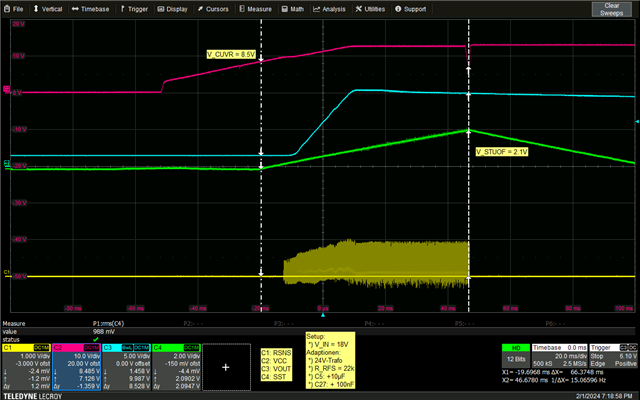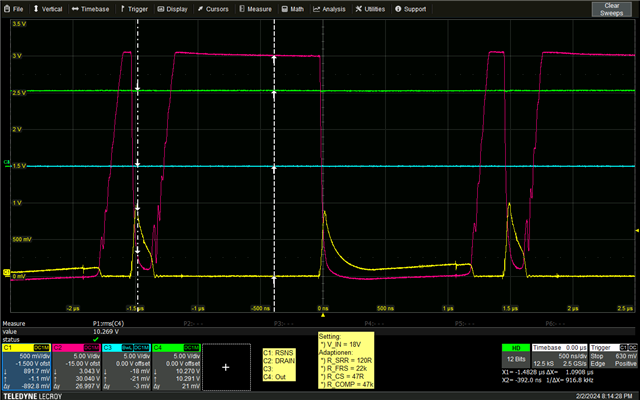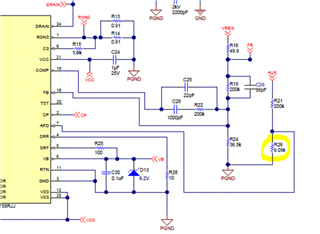Hello,
I wondered, if it is generally possible to get a 24V output version of the TPS23758 circuit.
Therefore the transformer (Wuerth 750318525) would have to be changed to Wuerth 750319214 (Same footprint, same topology, different transformer windings ratios).
We ordered the "TPS23758EVM-080" and the 750319214 transformer and made the transformers interchangeable. The components on the output side were exchanged for higher-voltage rated ones. According to the datasheet of the TPS23758 the feedback voltage divider can be left as it is because
original: V_out = (R19 + R24) / R24 * V_REFC * N_(SEC->AUX) = 236.5/36.5 * 1.75 * 0.445 = 5.03V
adaption: V_out = (R19 + R24) / R24 * V_REFC * N_(SEC->AUX) = 236.5/36.5 * 1.75 * 2.14 = 24.48V
Transformer comparison:
Original Transformer: https://www.we-online.com/components/products/datasheet/750318525.pdf
Replacement Transformer: https://www.we-online.com/components/products/datasheet/750319214.pdf
Testing is done via the external adapter and VIN = 18V. However, the TPS23758 seems to have a problem with the reduced primary inductance (changed vom 150µH original to 65µH in the adaption). The output regulates to about 10.5V, the voltage on the FB-Pin is 0.75V instead of 1.75V. Increasing the switching frequency up to 680kHz did not change the behaviour of the circuit. The converter goes in a kind of makro on/off state which depends on the startup timing (CSS capacitor).
Please note the attached image:

Converter starts switching, and the output rises. The voltage on the FB pin is around 0.75V (not shown) and stays there during the switching period (C1 on). This continues until SST reaches its termination value of 2.1V which forces the bootstrap startup current source to stop and therefore the output voltage to begin to reduce.
Changing the input voltage away from 18V towards higher voltages reduces the output voltage.
Also note the detailed waveforms in the following image (changed rise time of FET via SRR resistor).

The converter shows some starnge behaviour every second cycle, which is always shorter (maybe overcurrent error?)
Any help regarding the above issue would be very much aprreciated.




